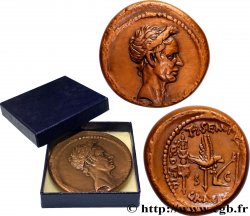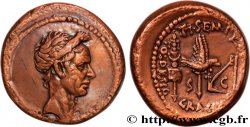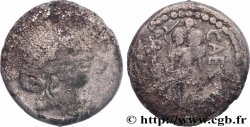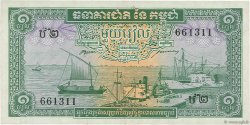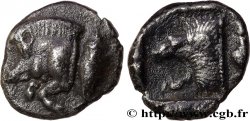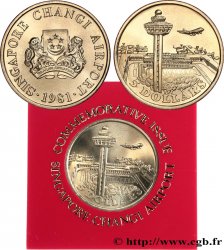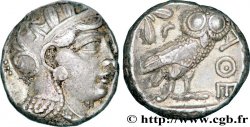v15_1496 - IULIUS CAESAR Denier
MONNAIES 15 (2002)
Startpreis : 295.00 €
Schätzung : 600.00 €
Erzielter Preis : 561.00 €
Anzahl der Gebote : 9
Höchstgebot : 561.00 €
Startpreis : 295.00 €
Schätzung : 600.00 €
Erzielter Preis : 561.00 €
Anzahl der Gebote : 9
Höchstgebot : 561.00 €
Type : Denier
Datum: 49 AC.
Name der Münzstätte / Stadt : Gaule ou Italie
Metall : Silber
Der Feingehalt beträgt : + 950 ‰
Durchmesser : 19,5 mm
Stempelstellung : 11 h.
Gewicht : 3,89 g.
Seltenheitsgrad : R1
Kommentare zum Erhaltungszustand:
Très bel exemplaire pour ce denier, le plus connu du monnayage de César. Flan particulièrement large et complet des deux côtes. Magnifique patine de médaillier avec des reflets bleutés acier et mordorés
N° im Nachschlagewerk :
Pedigree :
Cet exemplaire provient de la vente Bourgey des 9 et 10 novembre 1976, n° 216
Vorderseite
Titulatur der Vorderseite CAESAR À L'EXERGUE.
Beschreibung Vorderseite Éléphant passant à droite ; à ses pieds, un serpent (ou carnyx, trompette gauloise).
Übersetzung der Vorderseite “Cæsar”, (César).
Rückseite
Titulatur der Rückseite ANÉPIGRAPHE.
Beschreibung Rückseite Instruments pontificaux : simpulum, aspersoir, hache à sacrifice, chapeau à sacrifice.
Kommentare
Pendant très longtemps on pensa que ce denier avait été frappé par César, pendant la Guerre des Gaules entre 58 et 52 avant J.-C, en Gaule même. En fait, il fut fabriqué au début des Guerres Civiles. Il a été imité servilement par les Trévires avec le bronze HIRTIVS (LT. 9235), fortement romanisé. Il a aussi servi de modèle pour le potin des Rèmes au personnage courant et à l’éléphant (LT. 8124) et pour le potin au personnage courant à gauche (LT. 8143). Si ces deux potins sont bien des imitations du denier de Jules César, la chronologie haute des potins serait complètement à reconsidérer.
For a long time it was thought that this denarius had been struck by Caesar, during the Gallic Wars between 58 and 52 BC, in Gaul itself. In fact, it was made at the beginning of the Civil Wars. It was slavishly imitated by the Treveri with the bronze HIRTIVS (LT. 9235), which was highly Romanized. It also served as a model for the Remi potin with the running figure and the elephant (LT. 8124) and for the potin with the running figure to the left (LT. 8143). If these two potins are indeed imitations of the denarius of Julius Caesar, the high chronology of the potins would have to be completely reconsidered
For a long time it was thought that this denarius had been struck by Caesar, during the Gallic Wars between 58 and 52 BC, in Gaul itself. In fact, it was made at the beginning of the Civil Wars. It was slavishly imitated by the Treveri with the bronze HIRTIVS (LT. 9235), which was highly Romanized. It also served as a model for the Remi potin with the running figure and the elephant (LT. 8124) and for the potin with the running figure to the left (LT. 8143). If these two potins are indeed imitations of the denarius of Julius Caesar, the high chronology of the potins would have to be completely reconsidered







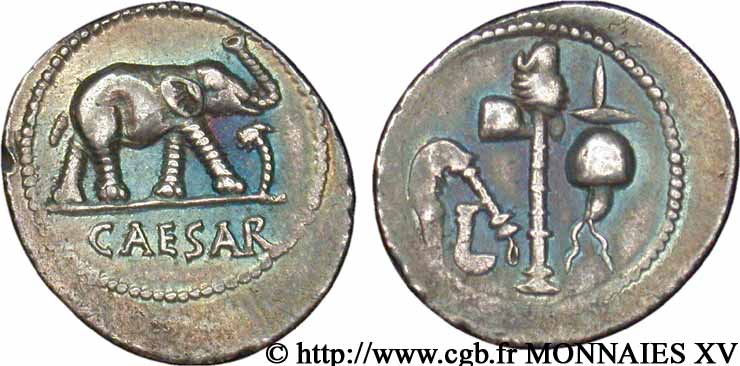
 Berichten über einen Fehler
Berichten über einen Fehler Die Seite drucken
Die Seite drucken Teilen meiner Auswahl
Teilen meiner Auswahl Stellen Sie eine Frage
Stellen Sie eine Frage Einlieferung/Verkauf
Einlieferung/Verkauf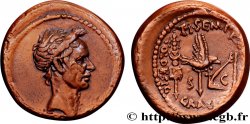
 Details
Details